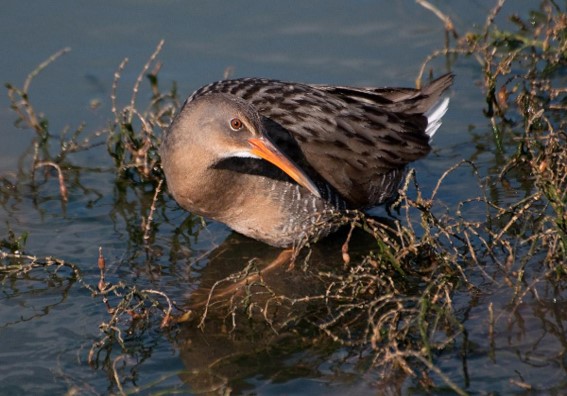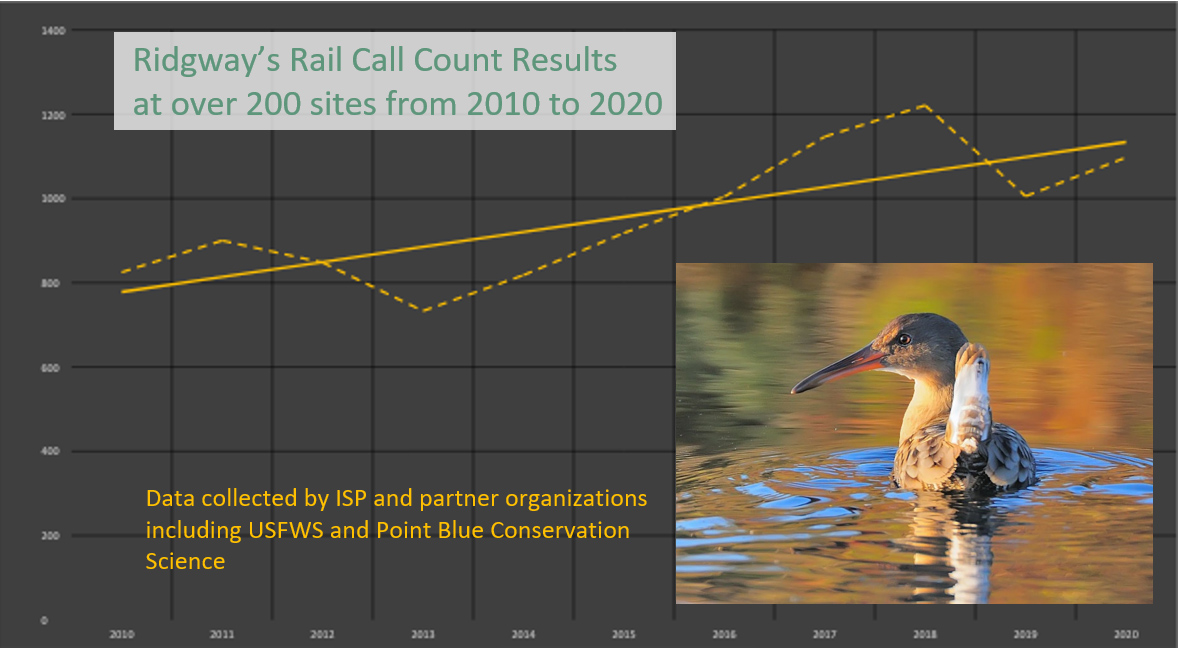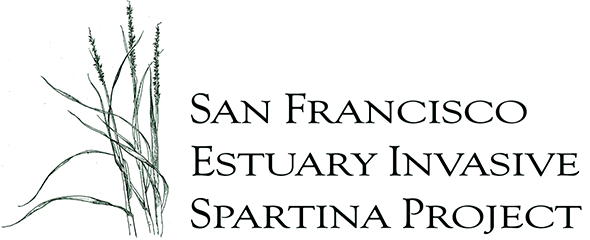Bair Island restoration site, San Mateo County.
Monitoring Ridgway’s Rails
The endangered California Ridgway’s rail
The California Ridgway’s rail (Rallus obsoletus obsoletus, formerly California clapper rail, Rallus longirostris obsoletus) is a federally-listed endangered species and one of the most endangered birds in California. The rail is a year-round resident of tidal marshes in Northern California, which have been reduced by more than 85% due to human development since the gold rush.
With federal, state, and NGO partners, biologists from the Invasive Spartina Project conduct call-count surveys annually from January 15 to April 15. The results of these surveys inform population health as well as the project’s programmatic components.
See the most recent Ridgway’s Rail report

Invasive Spartina and rails
Implementing this project requires balancing the removal of an invasive species with the protection of endangered species, including the California Ridgway’s rail. Rails can use invasive Spartina for habitat cover in the short term. But, in the long term, the invasive plant will reduce biodiversity, habitat quality, and food resources in tidal marshes, severely affecting the foraging and breeding grounds for rails and many other species.
Invasive Spartina Project biologists and partners conduct surveys in invaded marshes to ensure a careful approach to treatment of hybrid Spartina for the protection of Ridgway’s rails. A phased approach, linked with endangered species consultations with the U.S. Fish and Wildlife Service, includes a mix of treatment and restoration activities that maximizes benefits and limits impacts to rails while working to prevent the spread of invasive Spartina.
The Invasive Spartina Project team removes invasive Spartina, plants native vegetation, and restores habitat to ensure healthy wetlands for Ridgway’s rails and other wetland species. More than 550,000 native plants have been planted, and 82 high tide refuge islands have been installed to provide enhanced habitat. Call-count surveys find that rail numbers continue to increase at recent restoration sites, and the population trend over the past decade appears stable.
How call-count surveys are performed
In order to get the best estimate of the bird population, project biologists follow the standardized North American Secretive Marsh Bird Survey Protocol and broadcast recorded vocalizations in the marsh, with special permits from the U.S. Fish and Wildlife Service. Surveys are conducted for two hours total – an hour before and an hour after either sunrise or sunset, when rails are most likely to call and be detected. Surveyors perform 10-minute point counts along a transect, and broadcast calls for both Ridgway’s rail and black rail. Survey results represent a subset of the population at each site. Stable or recovering rail populations indicate that habitat enhancements are benefiting Ridgway’s rails and other tidal marsh wildlife. Listen to a recording of a Ridgway’s rail.

